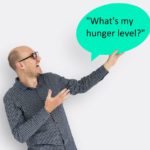
Kelsey N. Brown, MEd, CHES
Kelsey N. Brown, MEd, CHES
Article Archive
Technology makes so much nutrition information available at the touch of a button that people get muddled about what, when and how much to eat. Case in point: A Google search of “intermittent fasting” yields a mix of criticism and rave reviews. Numerous varieties of intermittent fasting also pop up, adding to the confusion. How do you give your clients practical, evidence-based suggestions amid all these mixed signals? Below, experts weigh in with scientifically grounded advice on some
of your clients’ most pressing nutrition questions.
I was a new group fitness instructor taking someone else’s muscle-toning class. “You’re not going low enough,” the instructor yelled at me from across the crowded room. As flames of embarrassment burned my cheeks, I dropped lower into the Romanian dead lift even though I had just come from teaching my seventh cycling class of the week and my body was spent. But this was what the class required, I rationalized, and I was fit—I should be able to keep up.
Unfortunately, I couldn’t keep up, and as a result, I gave myself a nagging lower-back injury.
They hear it every day: “Eat less and move more.” Yet, despite their best efforts, many clients fail to limit their caloric intake. Perhaps there’s a better way: Rather than pushing clients to eat less, we should be asking why they struggle with overconsumption.
Read MoreIgnoring hunger and restricting intake can trigger an impulse to overeat (Mathes et al. 2009). Becoming aware of and honoring biological hunger can help. While this sounds simple, it can be challenging. “Many people seem deathly afraid to trust their internal hunger cues,” Washington, D.C., dietitian Victoria Jarzabkowski, MS, RDN, says. “It shouldn’t be terrifying, but that just goes to show how out of touch most of us are with body awareness.”
Read MoreResearch suggests intuitive eating may be a promising way to maintain a normal body weight and a healthy relationship with food.
Read More



